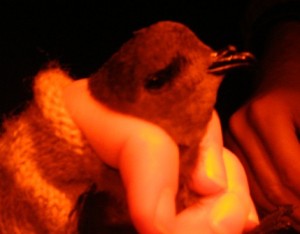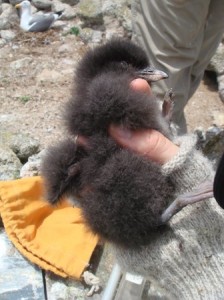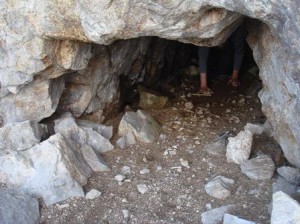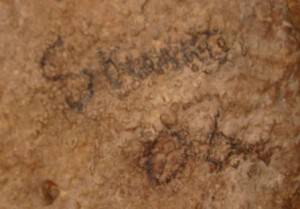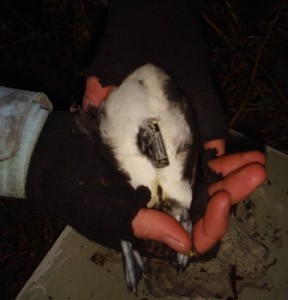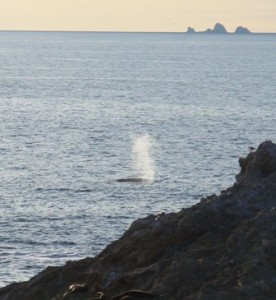Sorry I didn’t write yesterday! Two nights in a row of night work have left me exhausted. Plus, tomorrow, I’ve got to do a diet watch from 6am to 8am, so I’ll be up early. But, on the bright side, I get to shower tomorrow! It’s also my cooking day, so I’ll have a lightened load of afternoon work, and no evening work. Maybe even time for a nap!
The past two nights of night work have been a lot of fun. Two nights ago, as I mentioned at the end of my last entry, we went up on Lighthouse Hill to mistnet storm petrels. Of course, we caught birds other than storm petrels (Cassin’s auklets, and the occasional gull), but those we just let go right away. For the most part, we were catching two different types of storm petrels, and they are very interesting birds. Ashy Storm Petrels (of which we caught 48, considered a slow night) forage for food way out on the edge of the continental shelf, about six miles from here. Leach’s Storm Petrels (of which we caught four, and which are usually much rarer) forage even further out, possibly a hundred miles from the island.
Considering their size, which you can see in the picture at left, relative to my hand, this is quite a distance for these birds to travel. To attract them to our net, we play a call, quite loud, on a stereo we place behind the net. Then, we simply sit by the net and wait for the birds to fly into it. For most of the night, the sky was clear, and despite the light pollution from San Francisco, the stars were incredible. Darker conditions would have been better for catching birds, but obviously not as good for star-gazing.
In the picture at left, you can see a couple of things. First of all, everything is tinted red, because we use head lamps with a red filter to minimize disturbance to the wildlife. Second, you can see the small protruberance on the top of the bird’s nose–hence the name Tubenose. This “horn” helps the birds to drink saltwater, and excrete the salt efficiently.
Storm petrel netting didn’t end until around 2am, and the next day, it was up at 8:30 to monitor murre plots. In addition, Gerry, Annie, Russ, and Pete took the boat up to the North Farallon islands to conduct the first ever boat survey of bird life up there. The water was extremely calm, and the ride there took only about 25 minutes. The afternoon yesterday found us doing another massive chick check, this time including the Rhinocerous Auklet boxes, another tubenose, but with a larger horn on their beak, as you may have guessed from the name.
Rhino Auklet chicks are very cute. Similar-looking to Cassin’s Auklet chicks, but slightly darker. And, if you look closely (although this isn’t a very good picture for doing so) you can see the beginnings of a tube nose. Very cute.
Rhinocerous Auklets live in burrows, naturally, and the boxes that we build for them, but they also inhabit the caves on the island.
The picture below is the entrance to one of the main caves on the island, known as Rabbit Cave. Although the entrance is pretty small (those are Russ’ arms), after crawling about fifty feet, the cavern opens up into a quite large compartment, probably about fifty feet high and maybe thirty across. It’s one of the only places on the island where you can find absolute quiet, a gull-free zone. I spent a little while in there yesterday, checking on Auklets, looking around, and having Russ tell me ghost stories, relating to the Aleut woman whose skeleton was found in the back of the cave back when the lighthouse keepers first explored it.
Though there aren’t any major cave formations in it, it is a very still environment, and things last a very long time in it. In addition, since being taken over by PRBO, there has been a concerted effort to take care of the cave, which was long ago a sea cave, and keep it pristine.
At right is a picture of a cave inscription, which reads “Sewart, ’06.” That is not referring to 2006. This was written in 1906, by some of the very early settlers to visit the island. Pretty cool stuff!
Last night, I baked a chocolate chip cookie pie. (I baked it as good luck for Claudia, who had a job interview today. She’s trying to get a job on an island WAY off of South Georgia, studying Albatross. The job would be for 2 and a half YEARS, and she would get resupplied only twice a year, by boat. Intense.) There is none left now, and I think it was a big hit. After eating pie, Russ, Pete, Annie, Gerry, and I went out to deploy Time-Depth Recorders on ten Cassin’s Auklets. The TDR’s are for the study that Nina Karnovsky set up here last year, and I will be taking all of the data collected by them back to the lab at Pomona and analyzing it for the next year.
We were out from around 10:30 to midnight last night gluing the TDR’s onto adult Cassin’s Auklets. The deployment had to occur late at night, because the adults only return to feed their chicks at night. In addition, we had to search through quite a few boxes to find birds with fairly young (downy) chicks, because we wanted to choose birds whose chicks would not fledge while the TDR’s are deployed (because then the adults would stop returning to the box at night, and we would never be able to retrieve the TDR).
The deployment process actually went very smoothly, with each of us having a different job to get the process done quickly, and with the handling time for the bird starting at around 6 minutes and being slowly whittled down to a low of 3 minutes 59 seconds (I can’t even count the number of times that Russ said last night, “We are a well-oiled MACHINE!”).
I was up again pretty early this morning to do Pigeon Guillemot Resighting, and I just back from my chick check. Soon, I’ll be going out to do the Pigeon Guillemot Breeding study, the one that has me scaling cliff walls to peak inside nest crevices. No night work tonight, though, so I plan to go to bed right after dinner.
To end, I’ll talk about what I’ve seen lately. First of all, I spotted a Northern Mockingbird in the tree next to the house today (there are three trees on the island, and we check them frequently for lost land birds). Second, I’ve seen at least a few dead pinnipeds (seals, sea lions) floating around the island in the last two days. I wonder if it has anything to do with the fishery opening a few days ago. Can’t be sure. Third, I’ve been seeing the same small humpback whale, every single evening, from the blind at Sea Lion Cove.
Often, I only see his back right after I see his spray, but sometimes, he shows me his tail, or sticks his fins out of the water. The whales around here are a lot of fun to watch, and if you look hard enough you can almost always see one.
In the background of this photo, you can see the North Farallon islands. No people live on them, but they are home to a lot of birds and pinnipeds, just like this island.
Though we’ve experiencing fabulous weather since I got here, that all changed today, luckily. The wind, clouds, and cold weather are back, with gusts today around 20 knots. The wind is really important here, since it drives a process known as upwelling. The Farallon Islands are located very close to the continental shelf, and high winds here push warmer surface water away from the continental shelf. When the surface water is pushed away, it is replaced by cooler, nutrient-rich water from the depths, and it is that water which drives all of the productivity around here, from the base of the food chain all the way up to the whales and seabirds. So, to have a healthy chick-fleding year, we need this wind! The seas were even high enough today that we cancelled a media boat that was supposed to come out here. They will probably come out later this week.
Well, that’s all for now!
Best,
Eleanor

